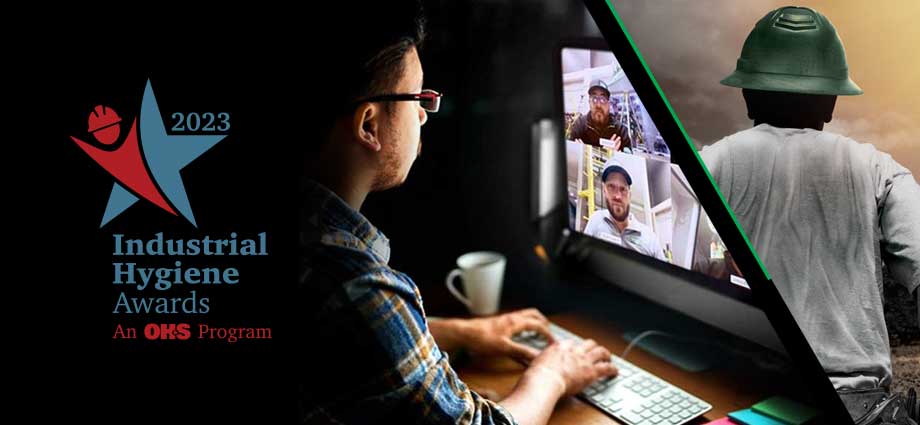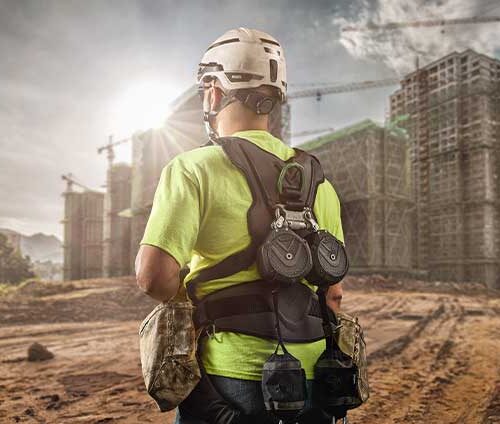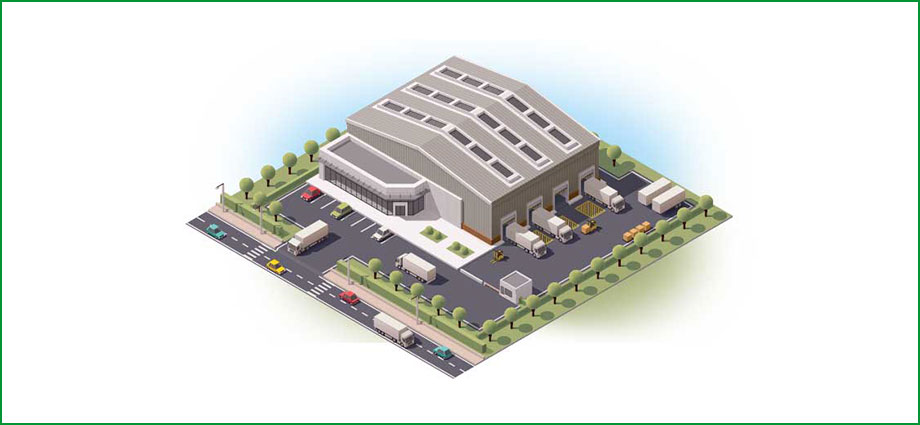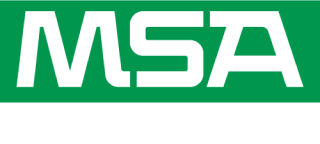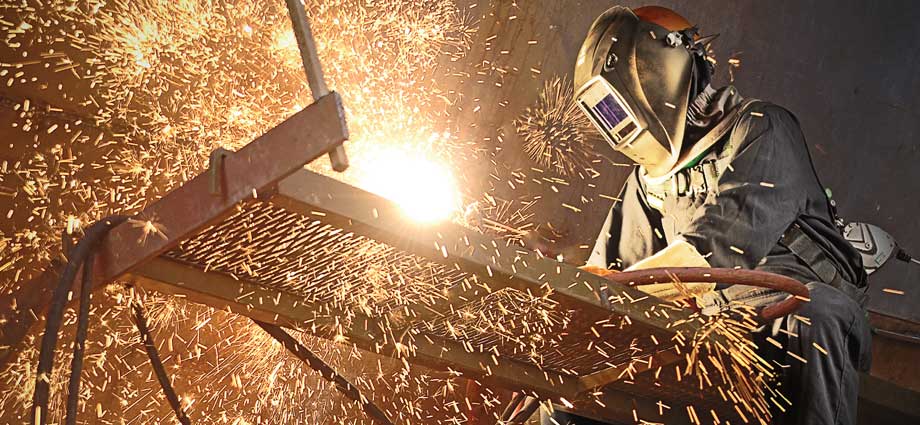
Welding — one of the OSHA-defined “hot work” activities — is a major task in many industries. You’ll find it performed in manufacturing, fabrication, and repair work. In fact, anywhere two or more materials must be joined together, welding will likely be present.
The three most common types of welding procedures performed by humans are:
- Shielded Metal Arc Welding (SMAW), or “stick welding,”
- Metal Inert Gas welding (MIG), aka, wire welding
- Tungsten Inert Gas welding (TIG)
While each type has its own benefits, advantages and uses, they all have one thing in common: they’re very hot!
These procedures have the potential to harm people, property, and the environment, so developing a safe welding program is essential. In this article, we’ll look at several tips and best practices for improving welding safety.
The list is by no means exhaustive. Nor is it meant to provide legal or regulatory advice. But it should give you and your team some great talking points as you develop your own program.
The tips are divided into three categories that we’ll call the 3 Ps. The groupings are:
- Planning
- Preparation
- Protection
Let’s start with planning your program.
Planning: Analyzing risks from bottom to top
Welding can be performed anywhere: from the shop floor to outdoors… and even on the roof. So start your planning with a site hazard analysis.
As you may for other potential hazards, include welding hazards during your walkthroughs.
A thorough, eyes-on approach works best. Identify flammables, ignitables, and other materials that can be affected by intense heat.
This includes gasses, vapors, mists and fumes. And don’t forget combustible particulate solids, such as grain dusts. Identify any potentially explosive atmospheres.
Once you’ve discovered the hazards, determine if any special protective equipment or procedures are necessary. For example, you may need to use welding blankets, pads, or curtains to protect surrounding equipment or people.
Determine your work area classifications. There are three designations:
Permanent areas specifically designed for hot work activities.
Hot works are allowed as long as the required conditions are met and a permit issued.
Areas where hot work activities are not allowed. Explosive atmospheres, impaired fire protection, and various other reasons justify this classification.
Identify the PPE your workers will need for welding jobs. Outer clothing should be designed to minimize the potential for burns, igniting, and hot spark trapping. Leather gloves help prevent shock and burns from electrodes. Synthetics are not good garments for welding.
Once your planning is complete (although hazard analysis should be ongoing as processes and property change or evolve), you’re ready to prepare to weld.
Preparation: Setting the scene for safety
Obviously, designated areas require less prep than permit-required locations. They’re already fire resistant by design. In a permit-required area, secure, remove or protect any fire hazards within 35 feet of the work to comply with OSHA regulations and ANSI standards.
In any permissible space, make sure the welding equipment is in good working order, including cables and electrode holders.
The team member doing the hot work must be suited up properly.
They should don the appropriate protective garments. This can include leather suits, jackets, sleeves, or aprons; as well as gloves and steel-toed boots.
Eye and face protection is a top priority.
The welding helmet or shield should be inspected for damage. Repair any damages or replace the helmet with an undamaged one.
In a secure, designated welding area, head protection may not be necessary (although a leather or fire resistant skull cap keeps sparks from igniting your hair).
However, in permit-required welding locations, there can be potential head injury from falling or protruding objects. Welding in confined spaces can be difficult to maneuver around without head bumps.
There are special adapters that attach welding shields or helmets to hard hats and some clip directly into hard hat slots. Others, such as the universal style adapter offered by MSA, have a band that fits around the perimeter of the hard hat. It’s secured by clips that attach to the bottom edge of the shell. If the hard hat doesn’t have accessory slots, adapters are the way to go.
Here’s a reminder, just because an accessory fits —a welding hood adapter, for example — it doesn’t necessarily mean it’s acceptable for use. According to ANSI Z89.1-2104 part 5:
“Accessories or replacement components, when installed, shall not cause the helmet to fail the requirements of this standard.
The entity claiming that an accessory or replacement component, when installed, does not cause the helmet to fail the requirements of this standard is responsible for providing justification upon request.”
If it has not been tested and certified… don’t use it.
Speaking of welding helmets, don’t forget the filter lens. Make sure you have the appropriate shade for the work. Using additional eye protection “under the hood” is always a great idea.
ADF (auto-darkening filter) lenses remain clear when you’re not welding and will darken as soon as you strike the arc. This could lead to some “nuisance blackouts” in extremely bright locations. Should the sensor get blocked, the lens might stop filtering.
However, a new technology senses the weld electromagnetically. Developed by Miller and available exclusively from Miller and MSA — the X-Mode shield uses antennae to detect an arc’s electromagnetic field or magnetic frequency, bypassing the dependence on light sensors. As a result it eliminates interference caused by sunlight or work done under bright lights.
If there isn’t a weld being made, it won’t darken. And since it doesn’t use light sensors, you won’t get flashed, either.
An additional benefit of the X-Mode shield is safer welding out of position, in tight spots, around highly reflective material (called “mirror” welding), or around obstructions that could block conventional light sensors.
Of course, preparing to work means policing the area. And that leads to the final P… protection.
Protection: Keeping your PEP safe during welding work
PEP is an acronym for People, Environment, and Property. These are three primary concerns you have during any hot work activity.
We mentioned permit-required areas earlier and will now touch on hot work permits in a little more in depth.
A hot work permit is more than just the go-ahead nod to perform the work. It’s a checklist to make sure all the preparation steps have been done. If you don’t have a permit, you can find a great example on page 12 of NFPA 51B.
OSHA regulations for hot work requirements, provide a comprehensive list of what needs to be done. Things like: condition of hot work equipment; special permissions required; requirements for areas within 35 feet of the hot work; and, requirements for work on or near walls, ceilings, roofs and enclosed equipment.
You can use it as is or as a template to create your own, site-specific permit.
I know… it’s more paperwork. But, I had a boss who was a stickler for documentation. He had a plaque above his desk that said, “If it ain’t been documented, it ain’t been done.”
And that’s a good mantra to use.
Remember, OSHA loves to see documentation when they come calling. If a fire breaks out or an accident involving personnel injury occurs, they’ll want to see it.
Your hot works permit may help keep you out of hot water with the authorities. But more importantly…
A hot works permit is fundamental to a safe, effective hot works program.
For more complete regulatory and standards consensus information, including hot works permits, consult these publications:
- NFPA 51B – Standard for Fire Prevention During Welding, Cutting, and Other Hot Work (2019 edition)
- ANSI Z49.1 – Safety in Welding, Cutting, and Allied Processes, 2012
- Various OSHA regulations, including 1910.252 – Welding, Cutting, and Brazing – General requirements
MSA/Miller welding helmets and adapters. Keeping you safe, because…
We Know What’s at Stake.


